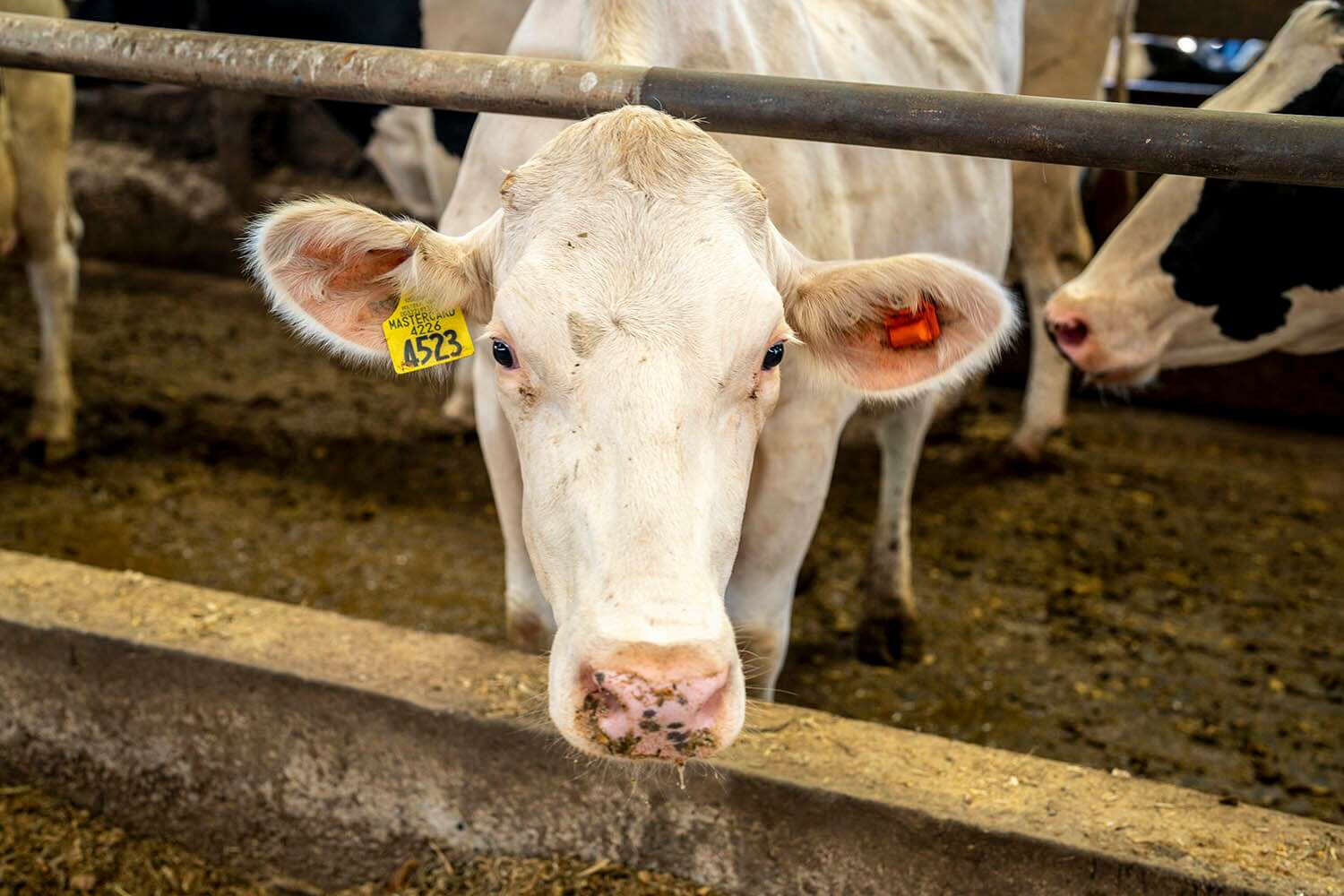
A new type of precision technology being developed in Maine could help dairy farmers improve the way they raise cows and produce milk.
A University of Maine researcher is looking into the potential use of electronic ear tags that track cow movements with the goal of learning more about how to best care for them.
Glenda Pereira, assistant extension professor and dairy specialist at the University of Maine Cooperative Extension and assistant professor of animal science at the School of Food and Agriculture, is leading the project with Maine dairy farmers.
Pereira’s idea is to see if ear tag data can be used to track and optimize the “cow time budget,” or the way that the cows spend their days given the space and resources they are provided. Pereira gathered a cohort of five dairy farmers across the state in February to participate in the research.
Farmers were trained on how to use the new technology, which comes from a Dutch cow monitoring system developer called CowManager, as well as how to collect data. The tags can track the animals’ temperatures and detect when they are doing certain activities, like chewing cud or running around the barn.

“We’re still seeing how it works on some farms versus other farms and learning a little bit about what works and what doesn’t,” Pereira said. “Not all farms are the same and some farms have issues with internet connection like the one farm that’s near the airport and it has issues with radio frequency. There’s some work to still work through and learn.”
Dairy diversity
The project brings together UMaine researchers, alumni and the dairy farming community.
Before arriving at UMaine, Pereira also had some research experience looking into the use of precision technology on dairy farms. Her master’s work at the University of Minnesota focused on the potential use for electronic ear tags and collars on organic and low-input conventional farms.
She joined the staff at UMaine as a dairy specialist about two years ago. Coming from Minnesota, the Maine dairy scene was somewhat familiar but also unique in the diversity of its systems. That includes the potential for diversification in the milk production system and diversification beyond milk production, such as producing beef and value-add products and being part of the agritourism industry.
“Maine has the clientele and consumerism to support local farms to be able to have that opportunity,” Pereira said.
Behavioral data
Soon after she started at UMaine, the Northeast Dairy Business Innovation Center invited Pereira to submit a proposal for a technical assistance project that involved at least five farmers. The organization was looking to do more work in Maine.

Pereira said her proposal was inspired by Rick Grant, at the Miner Institute in New York, who used precision technology to track when cows are standing up versus lying down, which is when they rest, ruminate and produce milk.
“You have to find this perfect happy medium, and using that behavioral data, you’re able to make those management decisions,” she said.
Pereira credited UMaine’s retired extension dairy specialists, including Rick Kersbergen, Gary Anderson and David Marcinkowski, for their help in getting the project off the ground.
“Their relationship with the Maine dairy industry was so strong and they really had connected with and created those relationships,” she said.
One of the farmers that Pereira recruited was Heather Miller, herdswoman at R.E. Hemond Farm Inc., in Minot. Miller is a UMaine alumna of the animal sciences program who graduated in 2017. She minored in equine sciences at school but learned that she wanted to work with cows after milking them for a class.
“I milked [at Witter Farm] almost every semester,” Miller said. “I was there for five years and milked there for nine semesters.”
Miller said that, so far, she loves the new precision technology on her farm.
Pereira and her graduate student, Ana Jimenez, travel around the state helping the cohort of dairy farmers run the project.
Pereira said a goal is to include undergraduate students in the project, too, through the Animal and Veterinary Science capstone program in the fall.
Scheduled to run through February 2024, the project has begun to yield results
For example, behavioral data have demonstrated that when cows are fed every day at the same time, they eat right away after exiting the milking parlor, then ruminate and lie down for longer following that feeding, which promotes milk production and udder health.
“Cows are really habit animals and they really like to have the same schedule every day,” Pereira said. “We were able to use that data to find that they just thrive in an environment where they have that consistency.”
The project has also yielded valuable peer-to-peer connections.
“For a lot of farmers — specifically dairy farmers because of their schedules and having to milk — it’s tough to get off the farm and socialize,” she said.
“I can sit here and lecture them about feeding management all day, but when they’re learning from people who are in their same shoes they can really take that home with them and say, ‘Hey this works at this farm. I think I can try it.’”
























